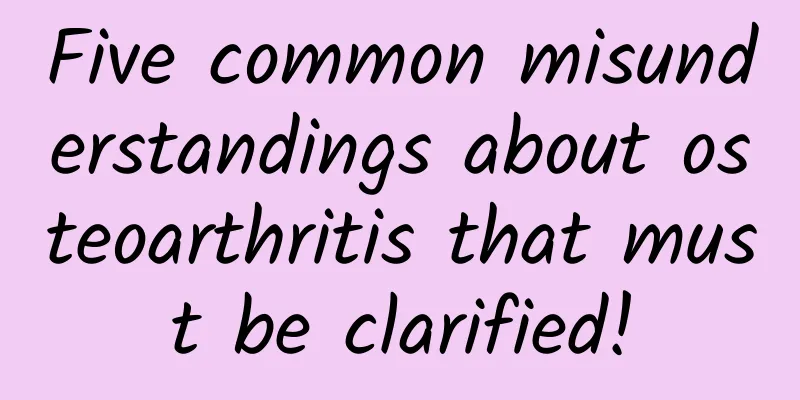Is it better to have a total hysterectomy or a partial hysterectomy?

|
What are the key points to pay attention to during subtotal hysterectomy? In order to help everyone understand, the editor has compiled the following key points to pay attention to during total hysterectomy. Please read them carefully, obstetricians and gynecologists. Is it better to have a complete hysterectomy or a partial hysterectomy? Whether it is better to have a complete hysterectomy or a partial hysterectomy depends mainly on the woman's actual condition and age group. For women over 50 years old who undergo surgery to remove the uterus due to cervical carcinoma in situ, it is generally best to undergo a radical hysterectomy. Because the main purpose of surgical treatment is to remove cervical lesions and prevent the lesions from spreading to the uterus. However, for middle-aged women with uterine fibroids, since they also have the need to have a sexual life, they can generally consider having a uterine incision to prevent the incision from affecting the quality of their sexual life. 1. Bleeding The areas most prone to bleeding during hysterectomy are the cruciate ligaments of the pelvic Brunnen funnel, the uterine blood vessels, and when pushing down the bladder. When uterine fibroids are too large, too wide, or located at a low position, they are prone to bleeding, which increases the difficulty of surgery. In this case, we must first identify the anatomical relationships and correctly handle large blood vessels. The operation is usually performed on the side that is easiest to operate on first. The assistant will pull the uterus to the other side as much as possible to expose the blood vessels clearly, clamp them thoroughly, and make the ligation secure. After the hysterectomy, the doctor will check again or increase the suture band to avoid bleeding due to loose thread ends after the tissue support is reduced. When disconnecting the cruciate ligament, leave enough tissue to prevent dislocation. Treat all blood spots in the abdominal layer, especially the muscle layer, to avoid abdominal abscess. 2. Adhesion When uterine fibroids are combined with endometriosis or inflammation, there may be varying degrees of adhesions, which often make surgical treatment difficult. Loose adhesions can be easily separated with fingers or collets. High-density adhesions, especially those that are common or located near the duodenal fossa or uterus, can cause bleeding or damage to internal organs if not handled properly. Special care should be taken during the operation, and sharp separation should be performed under observation as much as possible, and blunt separation should not be forced. When separating, try to get as close to the tumor as possible. Sometimes in good cases, it is better to leave part of the tumor wall on the internal organs. 3. Damage to human organs The uterus is located in the pelvis, adjacent to the bladder, duodenum and urethra, etc. Hysterectomy is prone to touch these organs. When adhesions are severe or the tumor has significantly changed its anatomical position, careless operation can easily cause organ damage. The most common injuries include bladder damage, urethral damage and duodenal damage. Bladder damage often occurs when the retroperitoneum is incised. When the bladder is pushed down, any damage should be repaired first. Urethral injuries often occur in large uterine fibroids, especially broad cruciate ligament or cervical fibroids. The urethra often moves and is easily injured. Patients with widespread adhesions or bleeding are also prone to urethral damage. In this case, one must understand the anatomy and be delicate in operation, and not blindly clamp or cut the tissue in an urgent need of promoting blood circulation. You can use your fingers to clearly feel the direction of the urethra and open the cruciate ligament of the pelvic Burkholderia when necessary, and perform the operation under supervision. Duodenal damage often occurs in patients with adhesions in the uterus and duodenal fossa. The operation should be gentle and delicate. In the case of high-density adhesions, blunt separation should not be forced. |
<<: Bleeding after hysterectomy
>>: Clotrimazole vaginal suppository
Recommend
What is the success rate of medical abortion?
Medical abortion is a common method of abortion. ...
What should I do if there is a pimple on my vulva?
The vulva is the part of the reproductive system ...
How to prevent stretch marks during pregnancy
The formation of stretch marks is due to one'...
Can I breastfeed if I have a fever?
Pregnant women are in very weak physical conditio...
Can I drink boiled water during confinement?
Many people will sweat a lot during the confineme...
What is the significance of photosynthesis? What energy does photosynthesis convert light energy into?
Photosynthesis is the sum of a series of complex ...
How to Grow Taller | Spring is here, it’s the right time to grow taller
If you want to help your child grow taller quickl...
Examination of lower limb edema in women
Lower limb edema is a common disease in our lives...
What is intramural uterine fibroids?
Generally speaking, uterine fibroids are divided ...
When should I take birth control pills? Which types of women should not take birth control pills?
Nowadays, many couples who do not want children, ...
Do you know the "sensitive period"? Special infants and young children also have it! Discovering the "sensitive period" will help you get twice the result with half the effort
In order to better protect their children, parent...
Can pregnant women drink black tea?
Pregnant women are a relatively special group of ...
What is the reason for the yellow color of watery leucorrhea?
For friends who have symptoms such as watery leuc...
Woman with freckles on face
When it comes to spots, most of us probably think...
What foods are better for adnexitis?
Adnexitis is a relatively common gynecological di...









